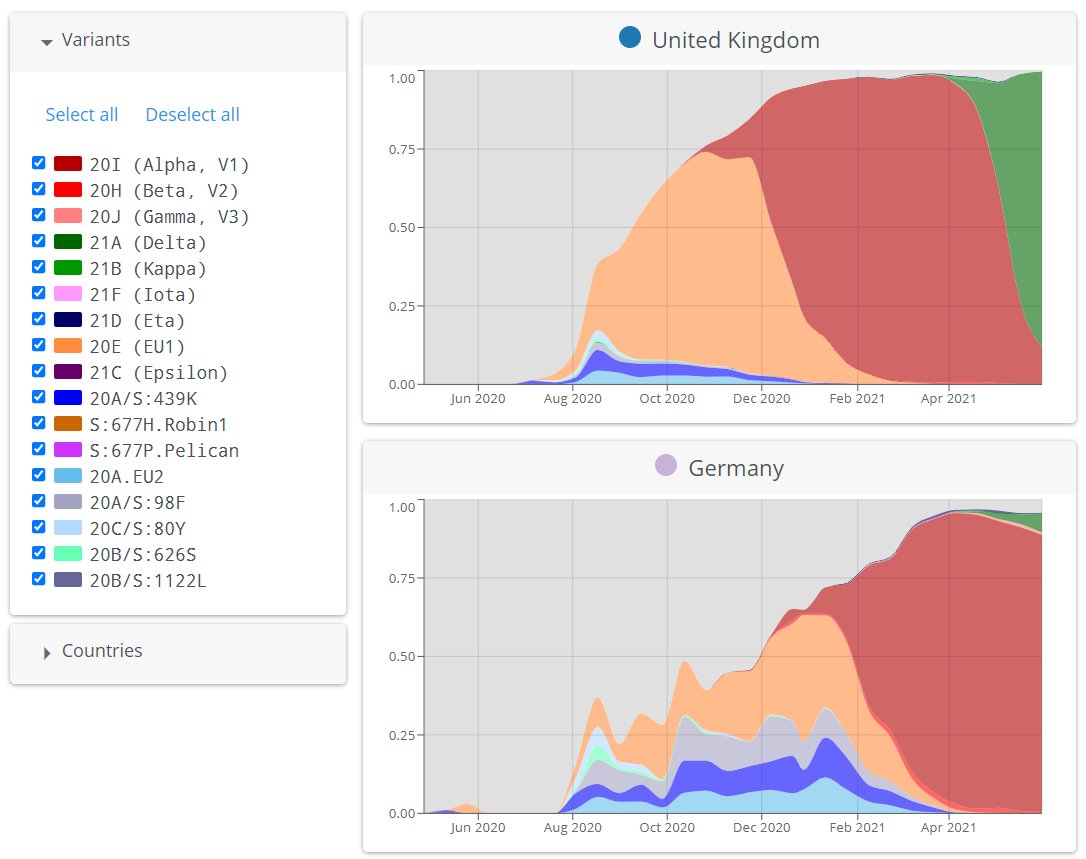
🎉.@WHO and @nextstrain names come to CoVariants.org!🎉
Now it's easier than ever to identify the variant you're interested in - and with beautiful new badges! 🔍
Also, the date plotting on the Per Country page has been made clearer!📈
Let's take a look... 👀
1/4
Now it's easier than ever to identify the variant you're interested in - and with beautiful new badges! 🔍
Also, the date plotting on the Per Country page has been made clearer!📈
Let's take a look... 👀
1/4
CoVariants now uses the same clades (including WHO names) you see on Nextstrain.org, making it easy to find a variant of interest!
This comes with beautiful new variant badges - & an updated Name Table that includes Pango & WHO badges, & old CoVariants names! 🎨🌈4
2/4
This comes with beautiful new variant badges - & an updated Name Table that includes Pango & WHO badges, & old CoVariants names! 🎨🌈4
2/4

Of course, this carries over to the Per Country page, where the variant order is also more intuitive. 📜
Additionally, the date axes have been made clearer with more lines, & mouse-over now shows exactly what period the data comes from! 🗓️
3/4

Additionally, the date axes have been made clearer with more lines, & mouse-over now shows exactly what period the data comes from! 🗓️
3/4


As usual, a huge thanks to @ivan_aksamentov, who plays a huge role in making CoVariants.org as beautiful & functional as it is! 🙏🏻👏🏻👏🏻
4/4
4/4
• • •
Missing some Tweet in this thread? You can try to
force a refresh
















